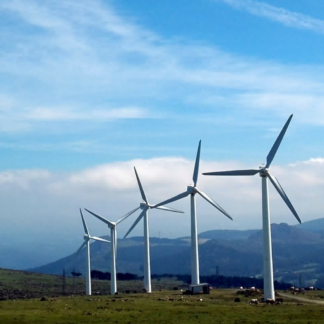
Wind farm safety equipment
Both onshore and offshore wind farms will require guard rails, safety nets, and personal fall protection equipment (such as lanyards and harnesses) to keep workers safe when they climb turbines. Hard hats are also necessary if there is a risk of equipment or debris falling.
Inside the turbine, workers are restricted to confined spaces, where exit routes should be clearly marked. Additionally, during the manufacturing of wind turbine blades, workers may be exposed to dust or harmful gases, so they must be protected by a reliable ventilation system and the use of protective personal equipment (PPE) such as respirators and gas detection devices.
Offshore wind farms are generally more dangerous environments, requiring non-slip foot and handwear, as well as ear protection. Wind farms may also utilise personnel tracking systems or man-down radio functions to keep track of worker safety in remote offshore areas.
Solar farm safety equipment
Solar panels are heavy and may be installed on elevated areas or rooves. Personnel need to be supplied with fall protection equipment and reliable PPE, as well as adequate training, to keep them safe.
Electrical safety may also be a concern, so shock risk assessments need to be carried out. In addition to safety measures such as circuit breakers, personnel should be equipped with insulated tools, voltage-rated gloves, and provided with safety training.
This article was first published on Carroll Technologies



